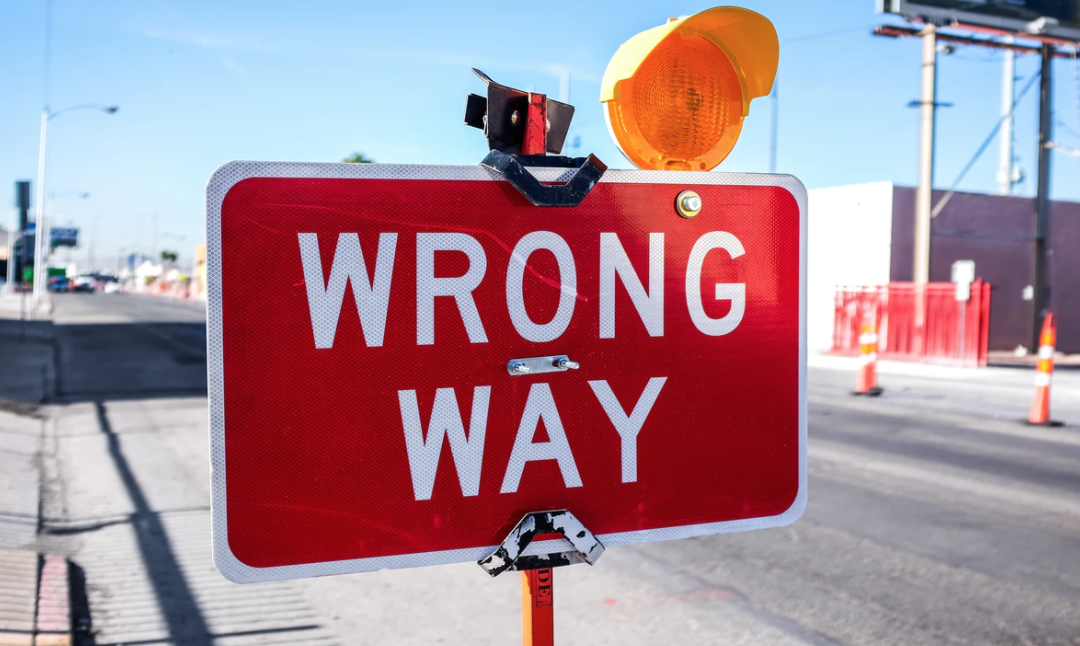The Seven Deadly Sins of Franchising

People are looking at franchising in a way they never used to
They’ve seen the proof of the model, and they want to be part of it.
But like any business opportunity, it’s possible to get in over your head and over leverage yourself, and end up in a lot of trouble.
In all of our years working with, educating and learning from franchisors, we’ve noticed several trends that send brands in the wrong direction. We think of them as the seven deadly sins of franchising:
Sin #1: Thou Shalt Not Hire Poorly
Sin #2: Thou Shalt Not Grow the Wrong Way
Sin #3: Thou Shalt Not Forget Innovation
Sin #4: Thou Shalt Not Force Demand
Sin #5 Thou Shalt Not Force Supply
Sin #6: Thou Shalt Not Have Weak Agreements
Sin #7: Thou Shalt Not Be Complacent
We not only want to help you avoid them, but figure out what action to take instead.
Sin #1: Thou Shalt Not Hire Poorly

It’s understandable when the founder of a company wants to run the organization their way. After all, they’ve put more hours into the business than any other team member, both from an emotional, physical, mental and financial perspective.
The danger is when executives of franchise organizations feel threatened by smart colleagues, and intentionally hire people who aren’t the highest performers. Leaders will often hire those who have lower intelligence and skills compared to them, because they’d rather not have their employees disagreeing and challenging them.
The reality is, a leader may be the smartest person in the room, but at some point a team of smart people will outcompete that leader. Particularly if the franchisor is looking to bring on private equity financing to scale, the investor playbook from day one is all about putting in a rock star team.
Too many franchisors approach leadership where anyone who threatens the big cheese is fired quickly, or treated in a patronizing and disrespectful manner to the point that they quit.
Some leaders are so threatened by their people that employees have to stroke their egos before they tell them anything, and being wrong hurts them deep in their psyche and makes them highly defensive.
Franchise organizations often churn through CEO’s, and it’s detrimental to growth. Massively successful franchises become that way because of the person steering the ship. It starts from the top and trickles down, so make sure your leadership his hiring the right people, and also treating them in a manner that isn’t steeped in ego protection and arrogance.
Sin #2: Thou Shalt Not Grow the Wrong Way

If you’re a growing franchisor, the two most common ways to grow, aka, two key levers to pull: Selling more deals as a franchisor, which results from tech forward marketing and sales; and increasing the revenue of franchisees, which happens from better operations and building brand equity.
In our experience, to grow revenue of franchises, it’s critical to grow their profitability. Now, theoretically a franchisor doesn’t necessarily have to focus on profitability, only top line revenue.
But if you want to be in this business for the long game, then you need to have a focus on franchise profitability. Too many brands will grow their footprint of stores while sacrificing profitability.
The most common example is when a franchisor’s eyes are bigger than their stomachs, and they open too many stores and ultimately cannibalize franchisees. On paper, the franchisor would be taking in money from all their locations, along with royalties from the stores. By ramping up total numbers of units, they believe their brand gains market penetration, has a better chance of beating out competing franchises, and can raise profits exponentially through owner fees and royalties, and you can dramatically explode brand equity, thus raising the tide for all your owners nationwide.
But this becomes a bad action when you disrupt the local franchise equilibrium. If two franchisees in a given city don’t not line up, or each of them start changing their offerings, that might reduce annual revenue at both locations. Meanwhile, the franchisor ignores their lower profitability.
This dynamic causes problems, such as the ones 7-11 experienced. You may remember the store out of Virginia where the two closest locations in the entire company were literally across the street from each other, with different owners. Literally five hundred feet separated the two stores, and one of them failed. But why would the franchisor even allow something like that? It’s a terrible investment, but because of the nature of the franchising model, the brand gets away with it.
Sin #3: Thou Shalt Not Forget Innovation

Sbarro, the sixty plus year old pizza company, was huge in the eighties and nineties in the heyday of mall rats.
But according to an article from Entrepreneur, they’ve been hemorrhaging customers for years. They are among the list of franchises who were once thriving, but now have fallen on hard times.
Partly because of a lack of innovation with the fast casual movement, partly because of numerous lawsuits, but mostly because of the unprecedented decline in mall traffic. Unlike other quick service restaurant franchises, they failed to remain relevant, so their massive fleet of stores no longer were profitable.
According to reports from NCB News, they filed for bankruptcy protection in 2019. It was the second bankruptcy filing in less than three years for the franchise, which announced plans to shutter 192 of its nearly 800 units.
This is the danger of not innovating. Whereas companies we talked about in our article, How Pizza Franchises Are Getting Their Slice Of The Pandemic Pie, learned their lessons and won big.
Sin #4: Thou Shalt Not Force Demand

Next, let’s talk about Subway. They tried to force demand with their five dollar footlong sandwich. In this case, the franchisor looked at the supply and demand curve and forced the cheap offering on the backs of franchisees and changed the equilibrium. Market forces say prices find equilibrium.
Well, in franchising, because of agreement in place, franchisors can overcome them and drive franchisees into debt. As the story went, the demand for the footlong might have shot up, but the bottom line plummeted, since the brand was not offering a lower margin product, just to increase revenue.
According to an interview with one franchisee from QSR Web, all that did was help franchisors with royalties, and ultimately the forced demand worked against the larger organization. Gross sales did go up but profitability plummeted. The complaint was that Subway didn’t care about franchisee profitability since they get paid on gross sales.
This deadly sin shows that you don’t want to put your owners in a position where they can never say no to you. If they believe they’re being squeezed for more profits and just the next victim in a line of suckers, it’s bad for everybody.
#5 Thou Shalt Not Force Supply

Quizno’s tried to compete with Subway with footlongs years ago. They saw that the concept of the five dollar footlong sub sandwich was something that stuck in the consumer’s mind, so they attempted to replicate it. Quizno’s essentially tried to force franchisees to sell sandwiches so they could compete with the five dollars price of their competitor.
But the negative downstream impact was that forced stores to buy bread and deli meats internally at markup. And as a result, the cost of goods was lowered on the back of zees, while the franchisors got more of the profits off it.
Since the five dollar footlong stuck in people’s brains as a sort of cultural meme, one could argue that it was a brand gain for both franchise brands. It’s a difficult metric to quantify, but shouldn’t be overlooked from a growth perspective.
Our recommendation is, if you are intentional about offerings such as that for your franchise, try to find an option that simultaneously increases profitability for the franchisee, but also contributes to long term brand growth. It’s possible to kill two birds with one stone, but you have to consider all the players in the ecosystem, not just the franchisor.
Sin #6: Thou Shalt Not Have Weak Agreements

Why are franchise agreements as draconian as they are? Naturally, the franchisor wants to maximize their own profitability and wants ironclad agreements to hold over franchisees head when they perform poorly. After all, bad actors can happen, and it’s imperative for the brand to protect their system
It happens. Franchisees are still human. But you’ve got a business to run, and your agreement must be airtight. Because at the end of the day, franchisees are operating under someone else’s brand. Iron clad agreement means the franchisors can control bad actors. And those who object to such agreement need to understand that franchisors are doing it in order to help franchisees be profitable and run good businesses.
Agreements are there for consistency. Owners shouldn't go outside of the brand standards. And if they think they can buy a burger franchise and then start selling other products when the current ones don’t work, they’re wrong. That’s not smart for their business, and it’s not fair to other franchisees who follow the guidelines. If customers get upset at bad products, they could hate the brand and never come back to any store again.
Sin #7: Thou Shalt Not Be Complacent

The last thing a franchisor should do is force franchisees on top of each other to make another buck. We’ve seen zors write some convoluted documents about nontraditional locations that will ultimately lower a franchisee’s profitability on that location, as it encroaches with other stores.
One example that comes to mind is a shipping and fulfillment franchise in Beverly Hills. Because of the high net worth of their customer, the owner of the location hiked up the prices because he knew the buyers wouldn’t blink an eye. Whereas most stores in the franchise system were earning $1m a year, he was doing $5m.
Mostly because he overcharged high net worth customers. On Rodeo Drive, the people who sent packages and used their shipping services weren’t as price conscious as, say, one of the lower income neighbors in a different city.
Now, that made his store lots of profits, but it’s a poor reflection on the franchise. This one owner took it upon himself to fleece customers, and that doesn’t maximize system wide franchise profitability. If a customer has a poor experience at one location, but a good one at another, that disconnect is as bad as having another negative experience. Consistency goes both ways. It prevents franchisees from being substandard, and not doing things outside of the brand.
To avoid this deadly sin, your job as franchisor is to make sure everyone is following the brand standards, but at the same time, not to have a vice-like grip on it. People should still have the flexibility to innovate when necessary. Know where the line is, and what the owner can and cannot compromise on, whether it’s price, marketing, service, etc. Innovation does come from your franchisees, so don’t strangle them.
In summary, here are the sins once again:
Sin #1: Thou Shalt Not Hire Poorly
Sin #2: Thou Shalt Not Grow the Wrong Way
Sin #3: Thou Shalt Not Forget Innovation
Sin #4: Thou Shalt Not Force Demand
Sin #5 Thou Shalt Not Force Supply
Sin #6: Thou Shalt Not Have Weak Agreements
Sin #7: Thou Shalt Not Be Complacent
Remember, like any business opportunity, it’s possible to get in over your head and over leverage yourself.
In all of our years working with, educating and learning from franchisors, these are the trends that send brands in the wrong direction. Avoid them if you can!
Joshua Kovacs is the CEO of Oakscale, where he leads strategy and development efforts by connecting multi-unit franchise operators and private equity to high growth, emerging franchise brands.
So Long Google Right Rail! Franchisors Rejoice!
Although I doubt anyone out there has been living under a rock for the last decade, but just in case I have a stray reader or two, I wanted to remind everyone that GOOGLE IS A BIG DEAL!
What are different ways to think about retargeting people who visit my franchise’s website but do not convert?
One of the tried and true facts of franchise lead generation is that it generally takes a big leap of faith for someone to seriously consider opening a franchise.
What FranchiseHelp is (and is not) - Lead Generation
Well, it’s kinda in the name... We help franchisees find franchises that they want to invest in, and we help franchisors who want to expand their business find potential franchisees.











